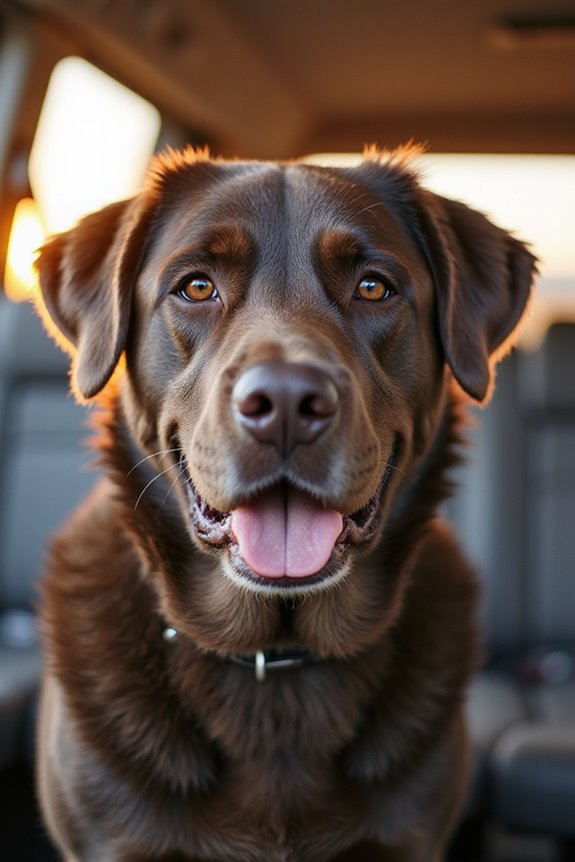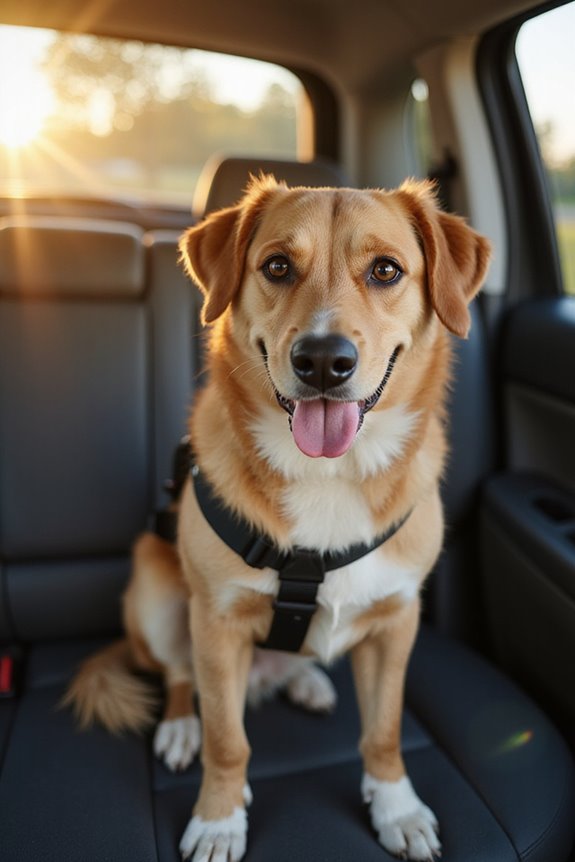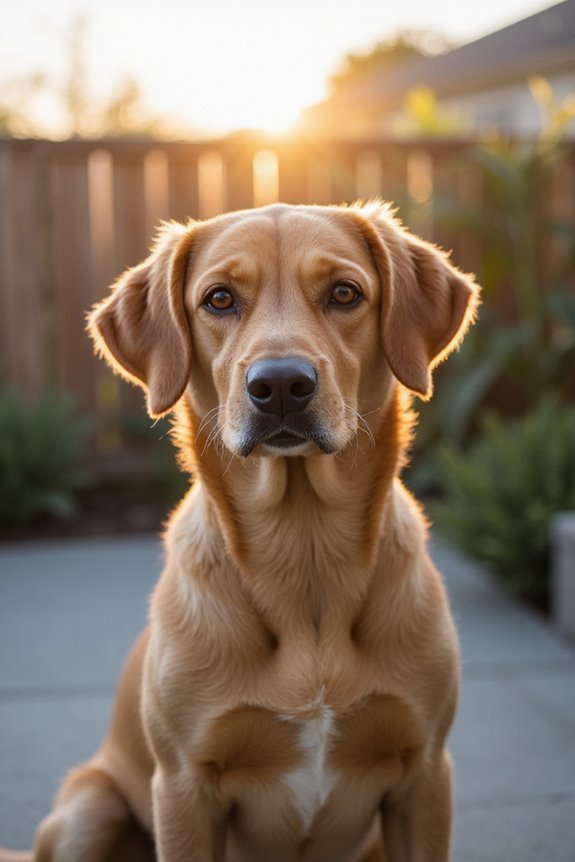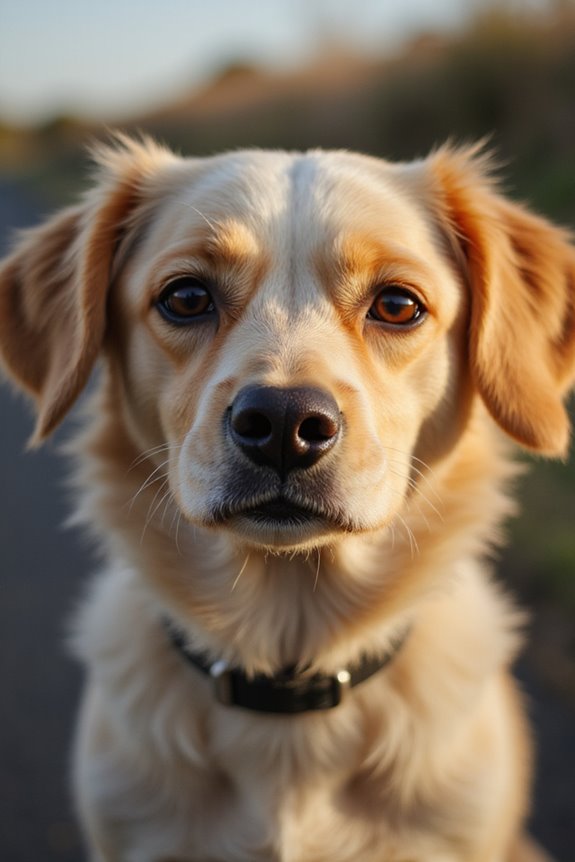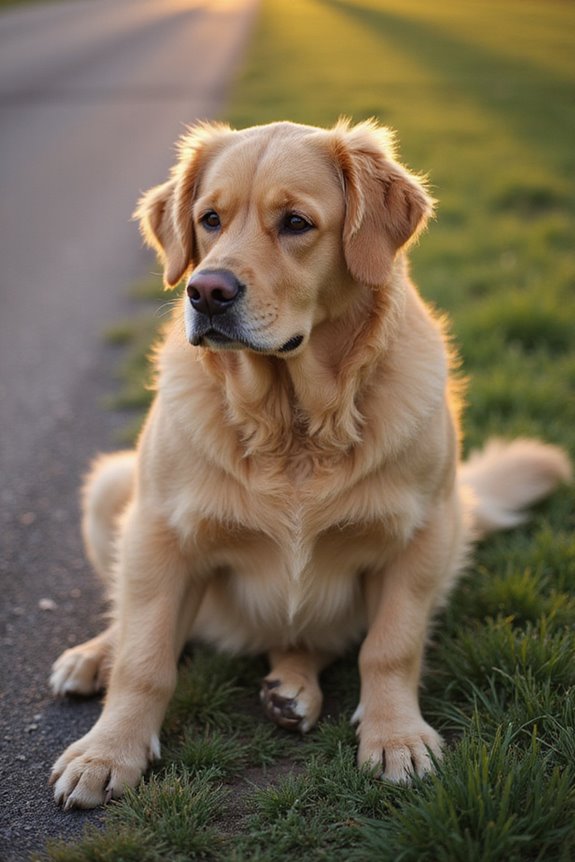To transport large dogs safely, I recommend using a full-size SUV or van with ample cargo space. Make sure your dog is secured in a durable, airline-approved crate with a minimum length of 36 inches. In the vehicle, harnesses act like seatbelts, and barriers keep your dog safely in the backseat, away from airbags. Maintain comfortable temperatures with climate control and provide regular water access. For a stress-free journey, familiarize your dog with the crate before travel, and there’s much more to take into account.
Key Takeaways
- Choose a spacious vehicle, like a full-size SUV or van, to ensure ample room for large dogs during transport.
- Use durable, airline-approved crates with a minimum length of 36 inches for safe travel and comfort.
- Secure dogs with proper harnesses or crates; harnesses act like seatbelts during sudden stops.
- Prepare a veterinary health certificate and up-to-date vaccinations before travel to ensure compliance and health safety.
- Provide regular water access and label crates with your contact information for convenience during transportation.
Vehicle Selection and Features for Large Dogs
When selecting a vehicle for transporting large dogs, it’s important to take into account size, accessibility, climate control, materials, and safety features. The right vehicle types make all the difference.
Here are key features to keep in mind:
- Cargo Space: Look for full-size SUVs or vans like the Chevrolet Suburban or Ford Transit Connect, providing ample room for large dogs and their gear.
- Accessibility: A moderate ride height and sliding doors improve access for older or less mobile dogs.
- Climate Control: Multi-zone systems keep the temperature comfortable, vital for long trips.
- Materials: Water-resistant surfaces simplify clean-up.
- Safety: Confirm multiple tether anchors are present for secure harness attachment.
Proper Crate Use and Specifications
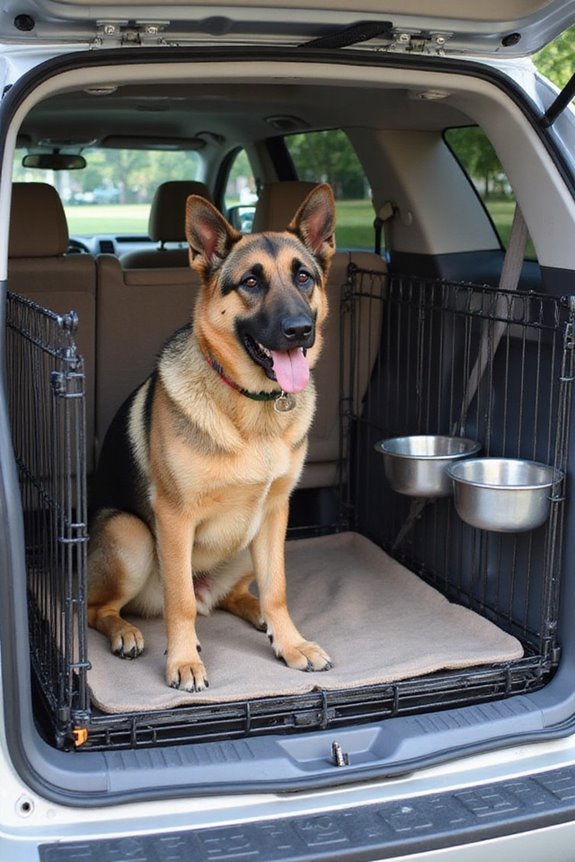
Selecting the right vehicle for transporting large dogs is just the beginning; confirming that your dog is comfortable and safe while in transit requires proper crate use and specifications.
To achieve this, consider the following:
- Crate Dimensions: A minimum length of 36 inches is needed. Confirm the crate allows your dog to stand, turn, and lie down comfortably.
- Crate Materials: Opt for durable hard plastic or composite materials that provide crash resistance and adequate ventilation.
- Secure Features: Look for reinforced frames and lockable doors for safety during transport.
- Proper Fit: Avoid excessively large crates; a snug fit prevents injury during sudden stops. Non-slip mats can enhance stability inside the crate. Additionally, ensure that the crate adheres to TSA-approved designs for air travel, as this compliance is crucial for safe transport.
Air Travel Considerations for Large Dogs
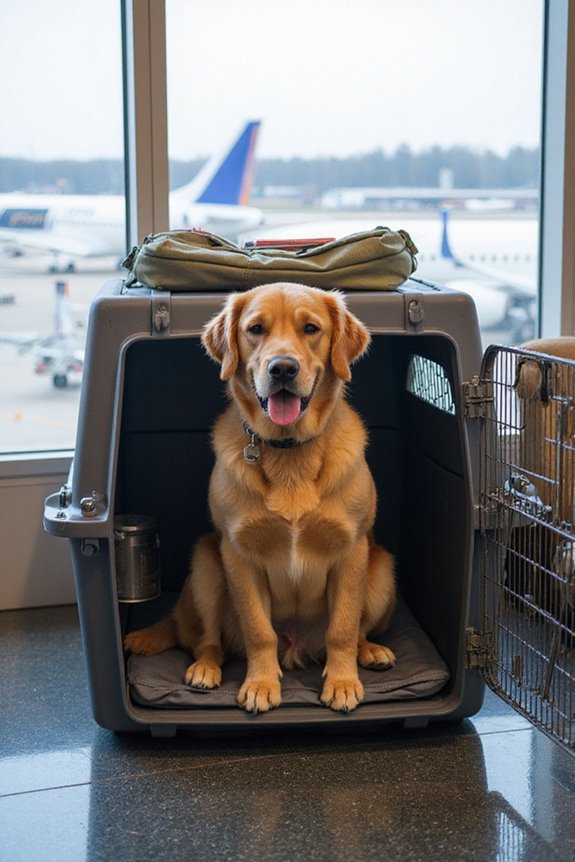
Transporting large dogs by air presents distinct challenges and considerations that require careful planning and adherence to airline regulations. Unlike smaller pets, large dogs typically can’t fly in the passenger cabin; they’re usually transported as cargo. To guarantee safe cargo travel, keep these guidelines in mind:
- Crate Requirements: Use a sturdy, airline-approved crate that allows your dog to stand, turn, and lie down comfortably. Hard-sided crates are recommended.
- Health Documentation: Obtain a veterinary health certificate, including up-to-date vaccinations, especially for international travel.
- Booking Procedures: Make reservations well in advance, as space for large dogs is limited.
- Acclimation: Familiarize your dog with the crate before the trip to reduce stress.
In-Vehicle Safety Measures

Guaranteeing the safety of large dogs while in a vehicle involves multiple measures that can considerably reduce the risk of injury for both the dog and the occupants.
- Invest in a Proper Harness: Using a travel harness acts like a seatbelt for your dog, keeping them secure during sudden stops. Make sure it’s fitted correctly and choose a harness that meets Federal Motor Vehicle Safety Standards.
- Use Barriers: Installing a barrier between the front and back seats helps contain your dog and minimizes driver distractions.
- Consider Crates: A sturdy, well-ventilated crate provides a safe space, reducing roaming and injury risk but should be secured tightly.
- Utilize Vehicle Features: Locking windows and childproof door locks enhance dog safety. Additionally, placing your dog in the backseat reduces potential injury from airbags.
Preparing for Health and Comfort During Transport
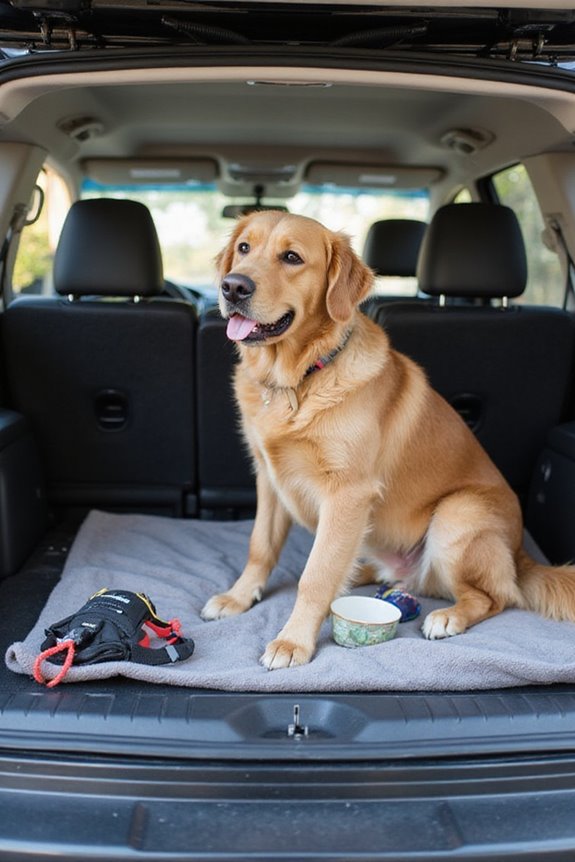
When making arrangements for the transport of large dogs, preparing for their health and comfort is just as important as guaranteeing their safety in the vehicle.
Pre-Transport Health
- Obtain a veterinary health certificate within 10 days of travel.
- Guarantee vaccinations, like rabies, are updated.
- Discuss any necessary medications with your vet.
Hydration Management
- Provide regular water access using travel-friendly containers.
- Avoid large meals before travel to minimize nausea.
- Carry familiar food to reduce dietary upset.
Crate Preparation
- Select a spacious crate that meets USDA guidelines, guaranteeing proper ventilation.
- Label the crate with contact info and feeding instructions. Additionally, ensure that the crate is suitable for large breeds to accommodate your dog’s size comfortably.
Regulatory and Logistical Aspects of Dog Transport
As you prepare to transport large dogs, understanding the regulatory and logistical aspects is essential for guaranteeing compliance and safeguarding your pet’s well-being during the journey.
Here are key points to take into account:
- Compliance Documentation: Obtain a valid health certificate from a USDA-accredited veterinarian, issued within 10 days of travel. For international journeys, secure an international health certificate endorsed by appropriate authorities.
- Transport Crates: Confirm crates meet International Air Transport Association (IATA) regulations regarding size and ventilation.
- Travel Requirements: Familiarize yourself with specific airline rules, including check-in times and weight limits.
- Health Considerations: Be aware that some brachycephalic breeds may face restrictions due to health risks during transport.
Staying informed guarantees a safer journey for your large dog.
Strategies for Reducing Travel Anxiety in Large Dogs
Reducing travel anxiety in large dogs is essential for ensuring a smooth journey, particularly since many pets experience stress during transportation. To help your dog acclimate, start with gradual exposure. Begin by introducing them to the parked car; reward with treats to form positive associations.
Utilize calming techniques like relaxation training, pairing a specific cue word with calmness during trips. Consider a secure travel crate to promote safety and reduce anxiety. Familiar scents, like a beloved blanket or calming apparel, can provide emotional comfort.
Incorporate soothing sounds by playing soft music during travel. If needed, consult your veterinarian about nutritional supplements tailored to your dog’s needs. Adopting these strategies can greatly ease anxiety for a more enjoyable experience.
Frequently Asked Questions
What Are the Best Dog Breeds for Traveling Long Distances?
When it comes to traveling breeds for long distances, I’ve found that German Shorthaired Pointers and Portuguese Water Dogs shine as exceptional companions. Their endurance and adaptable nature make every journey a joy, don’t you think?
How Can I Tell if My Dog Is Comfortable in a Crate?
I can tell my dog’s comfortable in the crate through calm behavior and willing entry during crate training. If she relaxes without showing dog anxiety, I know she’s found her safe space.
What Should I Pack for My Dog During Travel?
When I prepare for a trip, I create a dog travel essentials packing checklist. I never forget food, water, familiar blankets, and favorite toys, ensuring my pup feels comfy and secure throughout our journey together.
Can I Use a Regular Seatbelt for My Large Dog?
I wouldn’t recommend using a regular seatbelt for my large dog. Instead, I always opt for seatbelt harnesses designed for dog travel safety, ensuring my furry friend stays secure and comfortable during our journeys together.
How Do I Find Pet-Friendly Accommodations During Travel?
Traveling with my furry companion feels like wandering clouds, delightful and free. I always seek pet-friendly hotels while ensuring travel insurance covers us both. It makes our adventures feel safer and more thrilling together.

